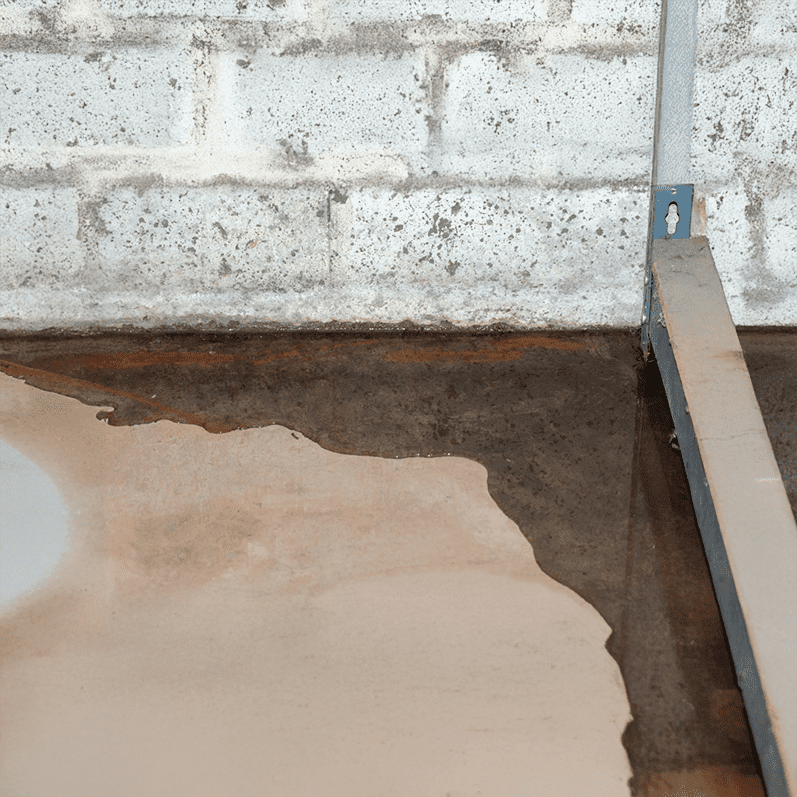
We may be able to provide free ballpark verbal pricing over the phone, but we encourage you to have your home or commercial drainage system assessed by an experienced Drainage Technician. It’s often the water you don’t see that’s attracting pests, as well as causing mold and structural issues.
We want to help you improve your drainage and spot any red flags to prevent or arrest costly problems.
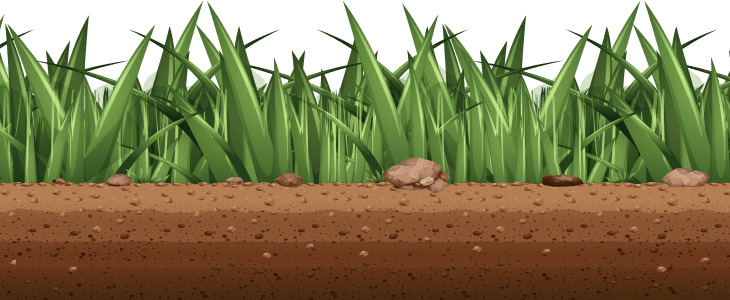
#9-Water in Basement or Crawl Space
 Popup #9
Popup #9
Water in Basement or Crawl Space
Wet Basement or Crawl Space?
Considering Basement Waterproofing?
We specialize in the Best Drainage and Waterproofing Systems available at the best cost. You really only get one chance to do waterproofing the right way. It's when the home is being built. Fortunately, Drain Designs has decades of experience when it comes to finding the best solutions for your new home and older home rainwater problems. Not only that, but our solutions have lots of other benefits and are built to last a lifetime.
In this picture below, the black waterproofing on this garage wall will be underneath the garage floor. You can imagine how costly it would be to remove the entire garage floor to fix the waterproofing. We often see wetness on the other side of these garage walls because water accumulates in the gravel that they use to backfill under the garage floor. There should be a foundation drain in place under the gravel to help the water bleed out.
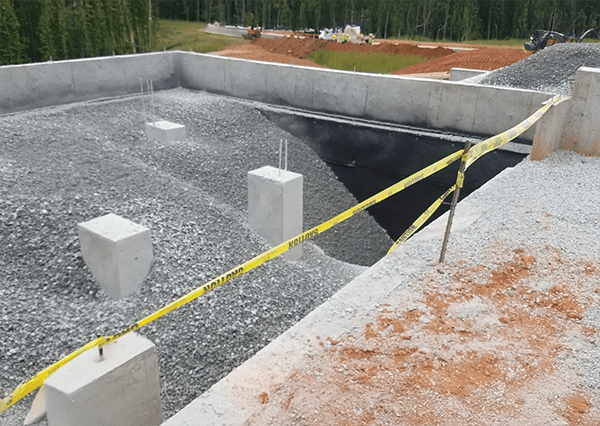
Once the home is built and landscaping is in place, it's generally better to try to address water intrusion issues with drainage improvements first. In other words, address the cause of the problem which is usually too much water accumulating against the wall.
We really only get one chance to install waterproofing correctly. The image below shows how easy it is to access the foundation when the home is being built. Once everything is back-filled, concrete sidewalks poured, landscaping and utilities in, it becomes extremely difficult to dig everything out again to fix the waterproofing.
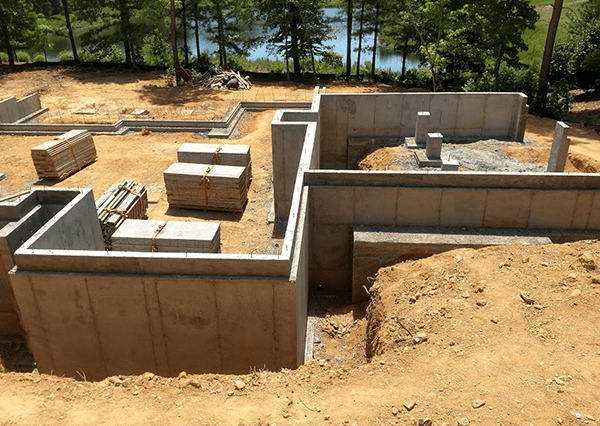
Waterproofing Problems and Solutions Explained:
Good News!
- You probably won't need Basement Waterproofing if you improve the drainage. Furthermore, if you do waterproof your basement, most waterproofing guarantees do not cover issues caused by drainage problems so you would still have to fix the drainage. If your foundation drain is clogged and water is building up on your walls, even the best waterproofing won't stop the water from coming in. As a matter of fact, most building code books now call it damp-proofing instead, since there is really no practical way to completely waterproof a foundation. Foundation drains are designed to prevent water from building up to and above the basement floor level. When the water level gets higher than the basement floor level, it tends to find its way in somewhere, even if it has to come up under the footer and between the wall and the floor.
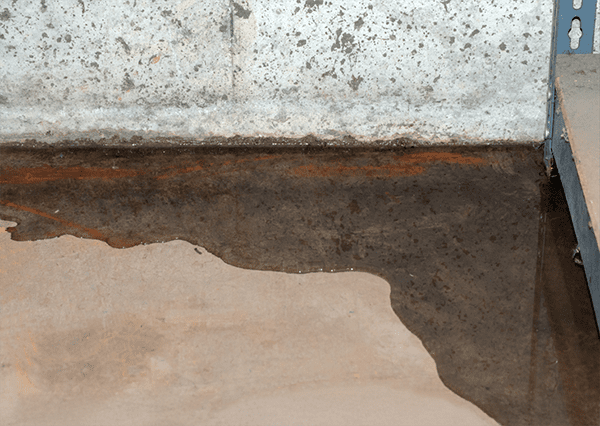
- Plus drainage improvements provide lots of other benefits such as an all-around healthier foundation, home and yard, plus less bugs, mold and mud.
- With proper drainage, the small amount of moisture or wetness that may get in can be sufficiently handled with a dehumidifier and a less expensive interior drainage solution but in over 95% of our cases, our drainage improvements sufficiently solve the problems.
If you do need Basement Waterproofing for a new home or on an existing home, don't worry, we've got you covered. American Drain is the best possible waterproofing system available. Below is a drawing of a side view/ cutaway of the American drain system. This is the only system that allows you to access the foundation walls without digging them up. This means that the system can be accessed, tested, monitored and maintained. These days, sensors are inexpensive and easy to install. We can drop sensors in to notify you and us if there is water building up anywhere around the foundation.
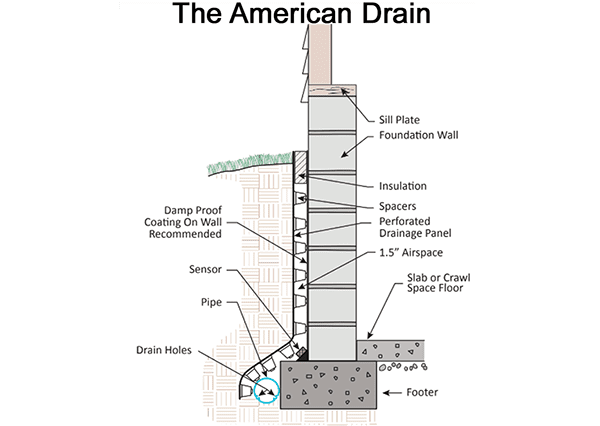
Standard Basement Waterproofing and Foundation Drain:
Here's a drawing of a standard Basement Waterproofing system and Foundation drain. As you can see, wet soil presses right up against the foundation wall. Most foundation drains are extremely difficult to access. This means that it is also difficult to clean and maintain them.
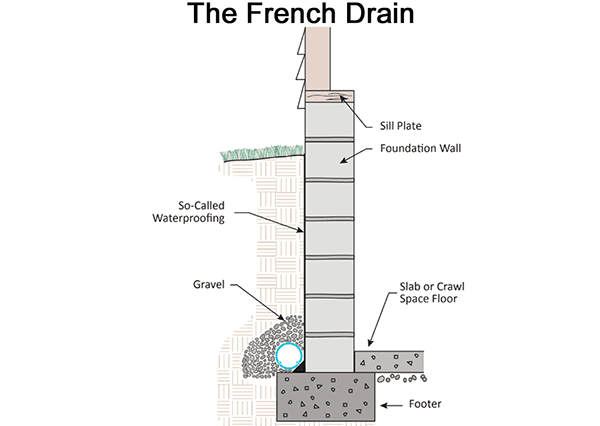
Interior Basement Waterproofing: This type of system is not recommended since it allows water to enter into the basement to be captured along the inside base of the basement walls. It's much more desirable, of course, to prevent the water from ever coming into the home. In some extreme cases this may be necessary but it's important to fix the drainage first. Once the drainage is fixed, you may find out that additional waterproofing is not needed or that a much less extensive interior treatment is needed.
Basement Waterproofing, like Helical Piers, are over prescribed.
In our experience, basement waterproofing and helical pairs are way over-prescribed. Worse yet, drainage problems often void waterproofing warranties. We have been able to sufficiently resolve over 99% of basement wetness issues by improving the exterior drainage. We have been to countless jobs where homeowners have received quotes for $50,000 to 100,000+ for waterproofing and helical piers that they simply didn't need. We were able to resolve the issues, plus lots of others, while giving the homeowners peace of mind for a fraction of the cost.
Also, watch out for loopholes in basement waterproofing guarantees because there are often lots of them. For example, many guarantees state that the warranty is void if there are drainage problems that cause water breaching the waterproofing system.
Helical Pier and cracking issues:
Have a drainage specialist check your drainage before you sign up for expensive Basement Waterproofing and/ or Helical Piers (for foundation cracking/ settling). Cracks in walls can allow water to more easily get into a basement or crawl space. The problem is that helical pairs hold one part of the foundation in place while the rest of it may settle as soil shrinks during dry weather and lift as soil expands during wet and freezing weather. Since helical piers don't move, the cracks tend to open and close as soil expands and contracts.
In our experience, in most cases it's better to fix the drainage issues. With proper drainage, there's more even saturation around the foundation which promotes more even expansion and contraction and therefore more even settling. In nearly all cases, when we fix the drainage, the cracking does not get worse over time. We recommend that homeowners take photos of the cracking and keep them in their records so if they go to sell the house years later, they can show that the problem was addressed at the cause and has not gotten worse since. To fix cracking walls and footers, we have seen much better results with reinforcements compared to helical piers.
Other ways water gets into your home and ways to keep it out:
Water typically finds its way in the basement or crawl space because of one or more of several different factors such as:
- The foundation drain may be clogged with roots and mud or crushed, or the outlet may have been grown over/ buried. The foundation drain is basically a French drain (perforated pipe surrounded by gravel) that wraps around the entire crawl space or basement and exits out to a low point of the property or into a sump crock to be pumped out. To find out more about sump pumps and crocks click here: Sump Pumps
Here is an image of a clogged Foundation drain outlet pipe. When this happens, water cannot get out of the pipe fast enough (or at all) so it builds up in the gravel around the foundation and can eventually rise up higher on the walls until the drain can catch up. This leads to water intrusion. Homeowners generally don't think about maintaining foundation drains yet this is essential. Once they become clogged to a point, they cannot be cleaned without damaging the pipe. Maintaining these systems is critical because they are cost prohibitive to replace.
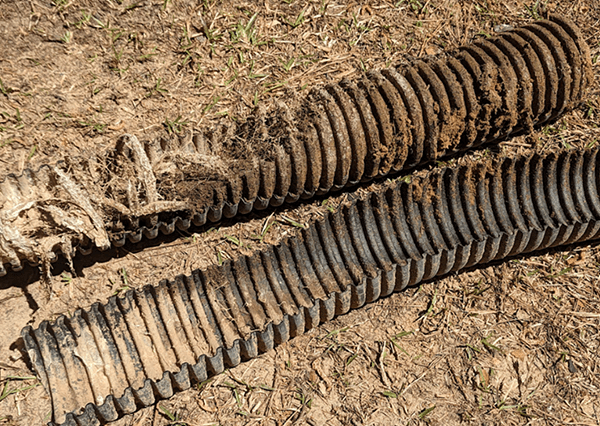
- Downspout(s) backing up or just discharging close to the foundation. The average downspout discharges more than 200 gallons of water per inch of rain. We can get an inch in a 5 or 10 minute heavy downpour. Discharging 6 ft away from the home is not enough. Even if the soil appears to be sloped away, moles or other underground tunneling animals can create tunneling that heads downhill towards the foundation. Downspout water that finds Its way into these tunnels can flow underground, towards and into your home. In many cases where downspouts flow short sections of pipe, we have held a garden hose at the end and ran 50 or so gallons only to see that none of it flows away but all of it goes into the ground, into underground tunneling near the home and ends up flowing into a clogged Foundation drain.
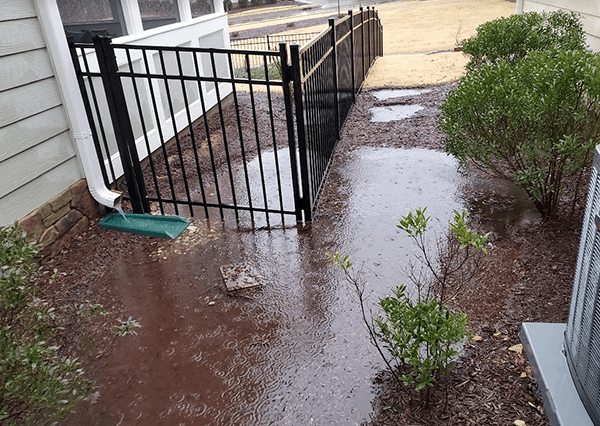
- Loose backfill soil: It typically takes a few years before the soil around a new home completely compacts. This is because excavators are careful when backfilling the foundation not to push the new walls in. This causes a number of problems as follows:
- Loose backfill soil can hold excess water and cause excess burden on the foundation drain. This can lead to water entering into the foundation drain faster than it can exit which leads to water building up onto the walls and coming into the foundation.
- Negative gradient, soil sloping towards the home instead of away from it, can be caused by loose soil compacting over time. Even if the grading was originally sloped away it may sink/ settle a few inches or more down, 2-3 feet out from the foundation walls. This area is often filled with mulch which makes the matter worse since it becomes essentially a moat filled alongside the home.
If you pick up a paver that's been laying in your yard for a couple of months, you will likely see lots of underground tunneling. Here are photos showing underground tunneling under a mat in the woods and tunneling made by some other creature.
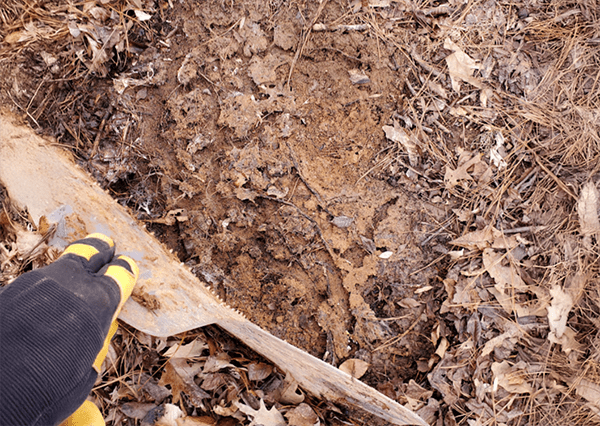
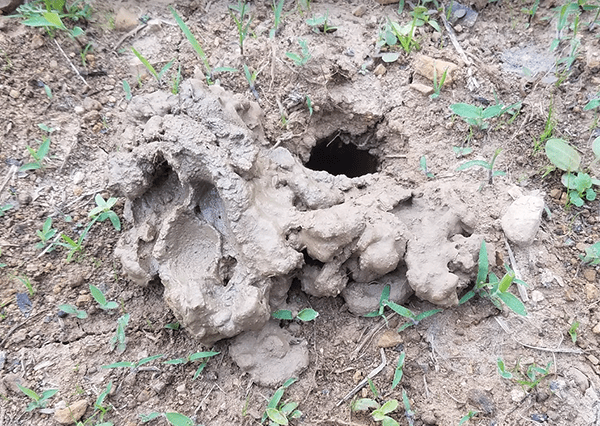
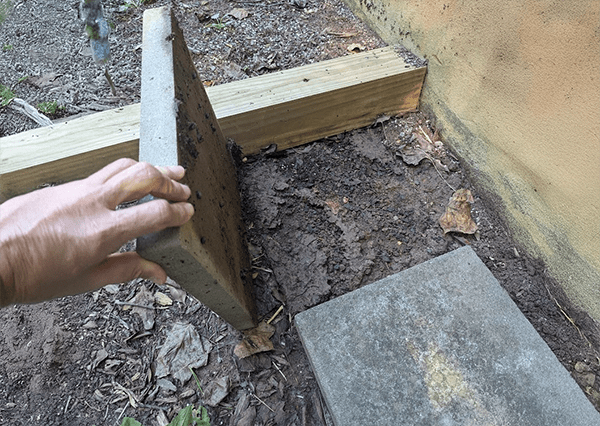
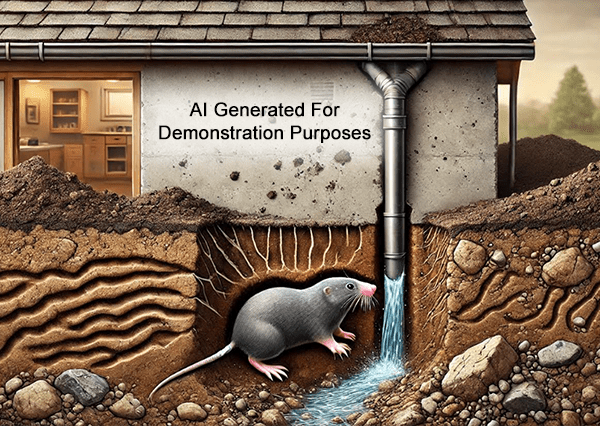
- the foundation drain is overwhelmed/ overburdened by downspout drains backing up/ leaking underground into the foundation drain.
- water overflowing from valleys on the roof. Surface drains can help in areas where the gutters can't handle the volume of water flowing from the roof In heavy rains. This often happens in roof valleys but strategically placed surface drains can collect gutter overflow.
Downspout drainage systems are extremely important. The average downspout discharges over 200 gallons of water per 1 inch of rain. While this water may seem to flow downhill and away from the home, much of the water may actually flow back towards the home through underground tunneling. To see this for yourself, you can run a hose at about 1/4 volume, about 2 gallons per minute, where a downspout is discharging. What we often see is that after 20 or 30 minutes, the entire ~50 gallons goes into the ground and does not flow away. You can imagine with 8 hours of rain how much water is flowing down and around the foundation. It's the long, steady rains that tend to cause the most structural damage.
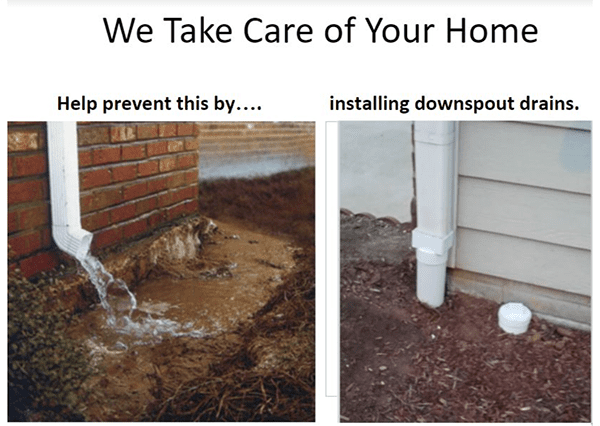
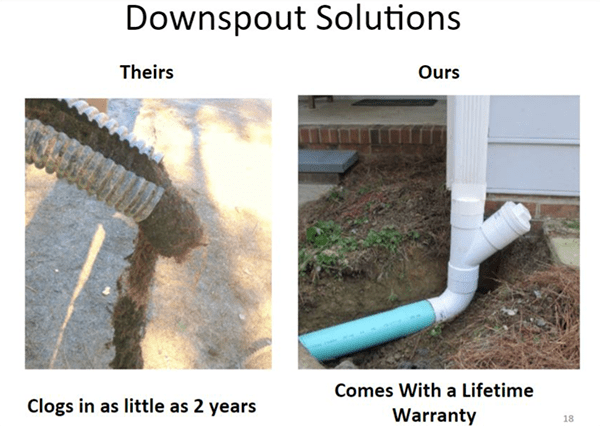
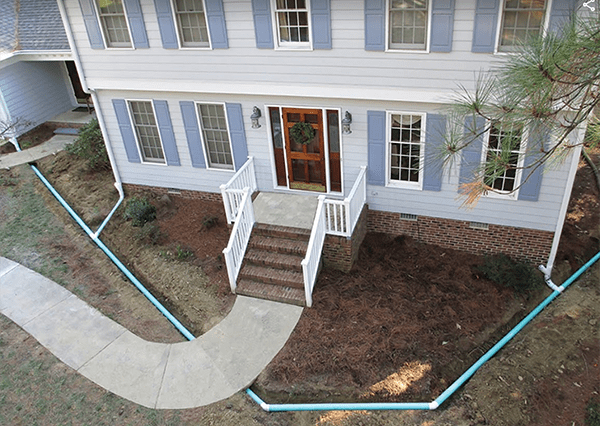
- poor grading sloping towards the home and/ or too much mulch holding water up against the house.
- failing waterproofing or cracks in the foundation that allow water to flow in
- Standing water between homes can also find its way into the foundation drain plus cause hydrostatic pressure on crawl space or basement walls that eventually leads to dampness, leaking, water intrusion or even flooding of the crawlspace/ basement.
The following General recommendations are important to minimize the amount of water that accumulates near/ on foundation walls and in the yard.
General Recommendations
- All gutters and downspouts should be secure & work properly. Collected water that will likely be harmful to the building and/ or landscaping should discharge at the most ideal location(s) on the property. Ideally, when possible/ practical/ healthy, water should be kept on site with well designed means of collection/ harvesting or rain gardening.
- All drainage systems should be built to last a lifetime.
- Maintenance: All buried drainage lines should be easy to test, inspect and should be maintained at least once every 2 years. Surface drains can fill with debris in one good rain so these need to be kept clean as a part of your regular lawn maintenance routine. Ideally, ensure surface drains are clean before and after big rains.
- When there is a basement or crawlspace and the exterior grade is higher on the outside of this space in relation to the interior crawlspace or basement floor, there should be a foundation drain system and 1 or more outlets sufficient to relieve water accumulation in and around the foundation. This system and its outlets should be easy to inspect and maintain.
- Gradient: There should be a minimum of 5% slope on the grade away from the home for 10 feet whenever possible (~6” in 10 feet) or a 2% minimum positive gradient on hard surfaces (concrete, pavers, etc.). Grading should be smooth and properly sloped with drains in low areas to prevent standing water, erosion and excess saturation around the foundation.
You probably won't need Basement Waterproofing if you improve your drainage. Plus drainage improvements have lots of other benefits such as an all-around healthier foundation, home and yard. Have a drainage specialist check your drainage before you sign up for expensive Basement Waterproofing. In our experience, basement waterproofing is way over prescribed. We have been able to sufficiently resolve over 99% of basement wetness issues by improving the exterior drainage. We have been to countless jobs where homeowners have received quotes for $50,000 to 100,000+ for waterproofing and helical piers that they simply didn't need. Water typically finds its way in the basement or crawl space because the foundation drain is clogged with roots and mud and/ or overwhelmed/ overburdened.
For help with all of your drainage and waterproofing needs, call Drain Designs. We can locate the different components of your drainage systems such as the inlets and outlets of your downspout drainage system, your surface drains and your foundation drain. Once we get your system working properly, we can maintain it so that it works optimally for the life of your home.
Sump Pumps
Sump pumps are often used in basements or in other low lying areas where there is not enough fall on the property to use a gravity drain. Gravity drains are preferable to sump pumps since they don't rely on mechanics so they will always work unless the drain becomes clogged.
The problem is sometimes gravity drains aren't practical. For example if there's not enough fall on the property to run a gravity drain downhill from a location such as a sump crock in the basement, then a sump pump may be the best option. In some cases there may be enough fall on a property but you may have to run the line hundreds of feet away to achieve the fall in which case it may be more practical to install a sump pump.
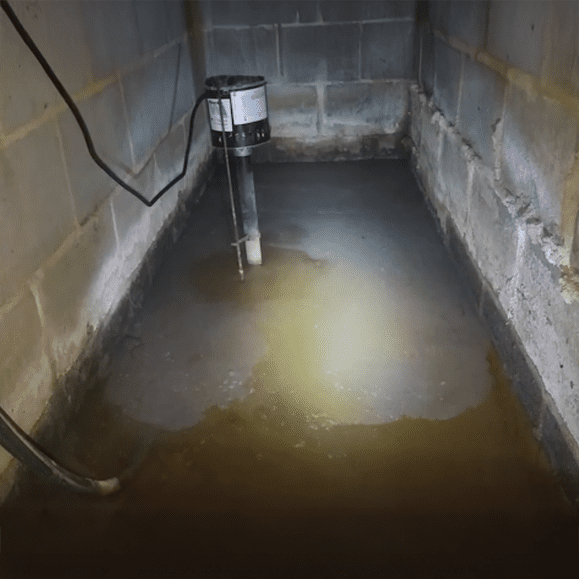
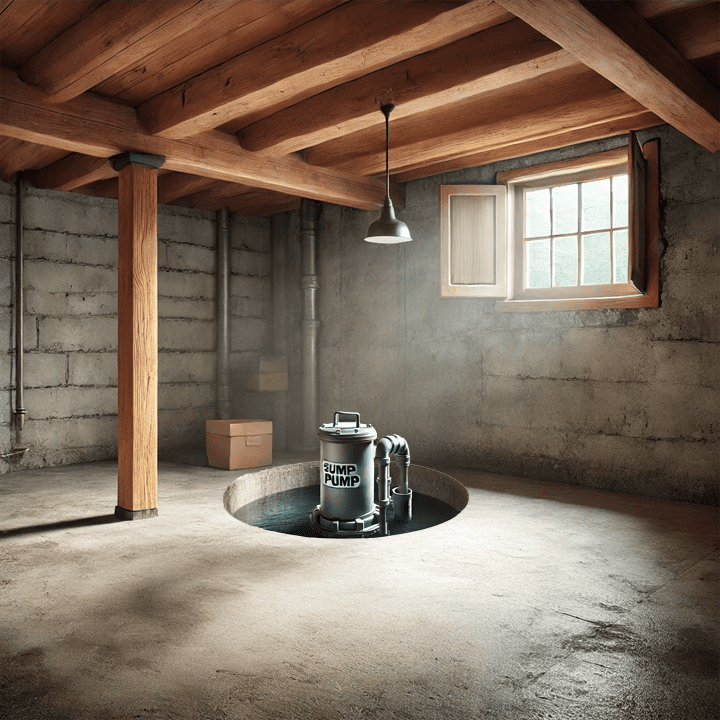
Battery backup systems
Sump pumps should have battery backup systems so if the power goes out during a storm, the battery will allow the sump pump to pump water out before it gets higher than the basement or crawl space floor level. If the sump pump stops working, water can rise up, floating the space and causing costly damage.
Sump pumps installed outdoors
In some cases, sump pumps may be installed outdoors. For example, if there is a problem area where water is standing in a backyard and there is no place to drain the water off on the property then it may need to be pumped up, for example, to the street. This may require an electrician to hook up a GFCI outlet for the sump pump or to hardwire it to a breaker.
Drain Designs can help with all your rainwater and foundation drainage sump pump needs.
The majority of the work when it comes to sump pump installation is generally installing the sump pump drainage pipe and the sump pump crock. We will make sure that the sump crock is properly connected to the foundation drain or French drain systems or into any other drainage components that should be tied into the sump pump system. We will also make sure that components like downspout drains are not unnecessarily tied into the sump pump system since they can overwhelm the sump pump and shorten its life significantly. In other words Drain Designs will ensure the sump pump is your best option for your area that it is installed properly carrying the water out to a desired location instead of just pumping it right outside of your basement wall.
We have worked on many jobs where sump pumps have been installed by plumbers or handyman so that the water pumps right outside of the wall, drains in through the ground right back into the sump crock and the same water is then pumped out again over and over shortening the life of the pump. This may be because plumbing and rainwater drainage are essentially two different trades. While plumbers are good at installing plumbing components, they are typically not trained on rainwater/ groundwater drainage management.
We do not install sewage pumps.
Drain designs does not install sewage pumps however, we do work with local plumbers and can help you with a recommendation for the best sewage pump installers near you.
Drain Designs can help prevent flooding by ensuring your system is designed, installed and maintained properly. The sump pump is an important part of your drainage system. We recommend testing and inspecting your sump pump yearly. We can also repair or replace non-working sump pumps. We partner with excellent local plumbers and electricians and can work together with them when needed to offer turnkey sump pump solutions.
Let’s Get Started
“Protect Your Home & Yard with Expert Drainage Solutions!”
Tired of dealing with standing water or foundation damage? Keep your home and landscape safe with our professional drainage systems!
✅ Prevent Water Damage
✅ Eliminate Puddles & Erosion
✅ Long-lasting Solutions
Don’t wait until it’s too late – Schedule Your Consultation Today!
